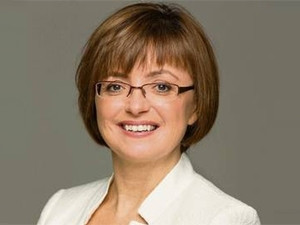
Microsoft is expanding its European data centre capacity to service growing demand for its cloud services.
Based in Clondalkin, outside Dublin, Ireland, the facility was Microsoft's first "mega data centre" outside North America and is responsible for handling the growing workloads for European users as well as Microsoft's own global cloud services such as Bing, Xbox Live, and Skype.
The latest expansion will add 15 700 square metres of capacity to the centre, bringing the total to 54 255.
Since each expansion has also been marked by improvements in density, compute power and energy-efficiency, this latest expansion will add considerably to the company's European capacity, said Cathriona Hallahan, MD of Microsoft Ireland.
The new facility, scheduled to be online in 2014, will cost EUR170 million, bringing the company's total investment in the data centre to EUR594 million, and growing the facility's staff complement by 20, to 100.
Microsoft has continued to expand its data centre footprint across the globe, but there are still no plans for facilities in Africa, where services are offered through its hosting provider channel partners.
The company now operates "between 10 and 100" data centres worldwide, run by its Global Foundation Services team, keeping the exact number and locations a closely guarded secret but hinting at continued growth across its cloud service portfolio driving expansion.
Keeping cool
Ireland's favourable climate (ie: cold and wet) has helped Microsoft improve the energy-efficiency of its data centres, with the current generation of computing operating at a power utilisation efficiency (PUE) of around 1.2 (meaning it expends .2 watts of power cooling every watt spent on computing). This marks substantial improvements over previous generations, some of which are still in operation - the data centre has expanded through several generations of architecture, with rack and server design changing radically over time. The new generation uses just 1% of the water of the first generation.
Microsoft's next generation of data centre design is hoped to achieve levels of 1.07-1.19, bringing it closer to industry leaders. Facebook, for example, claims a PUE of around 1.07 for its Prineville data centre, while Google's centres reportedly run between 1.08 and 1.18. Amazon and Apple don't report PUE numbers, but they are believed to be somewhat behind the efficiency curve. Power-efficiency correlates to cost, and is a major part of the cost efficiencies of cloud services ? in-house data centres can run as high as a PUE of 1.9-2.0.
Microsoft's data centre researchers are now investigating installing methane-powered fuel cells, to cut out expensive and inefficient power distribution. Earlier this year, eBay installed Bloom fuel cells in its Utah data centre as its primary power source - Microsoft wants to go further, integrating the fuel cells directly into the compute racks to improve performance.
Share